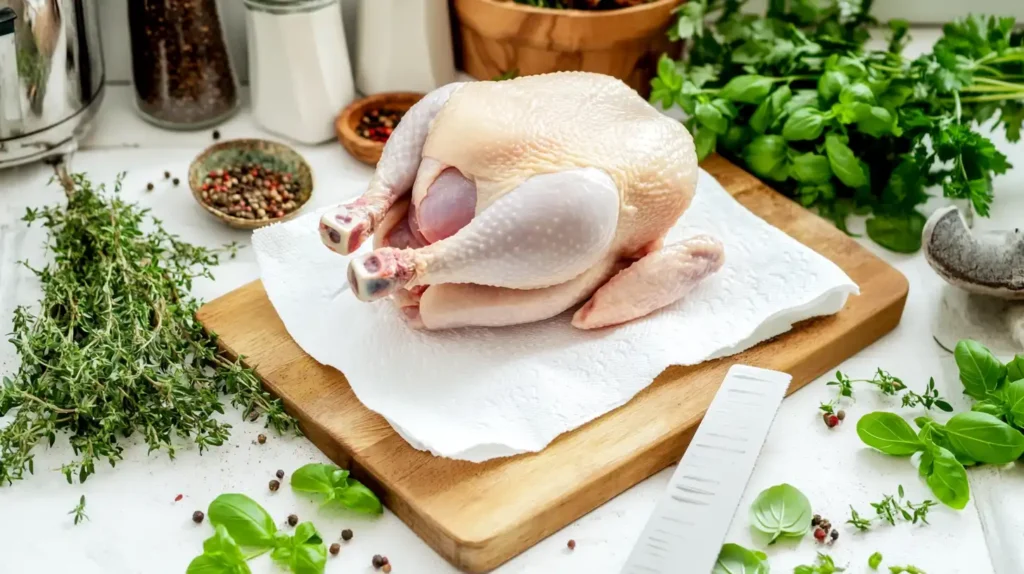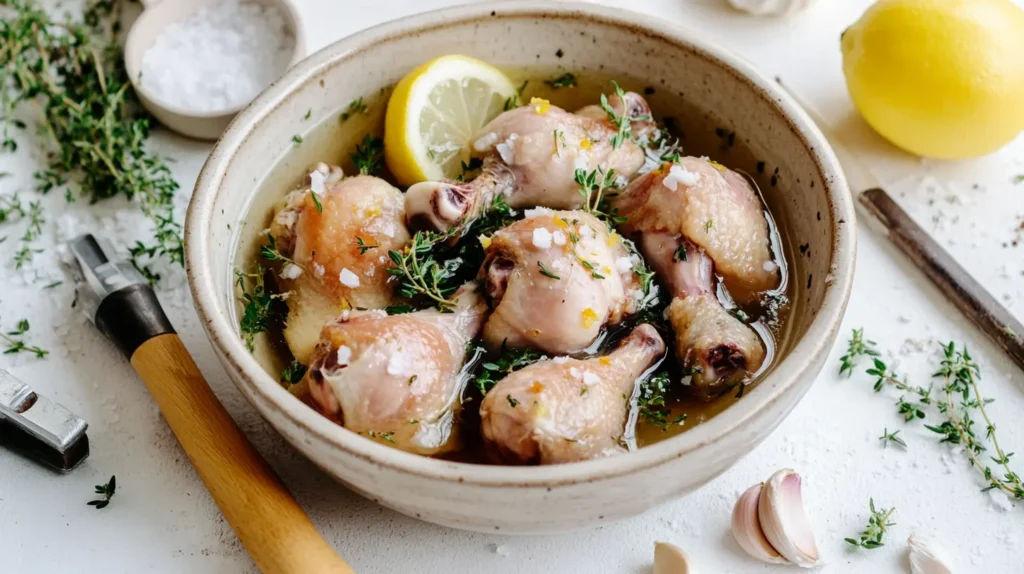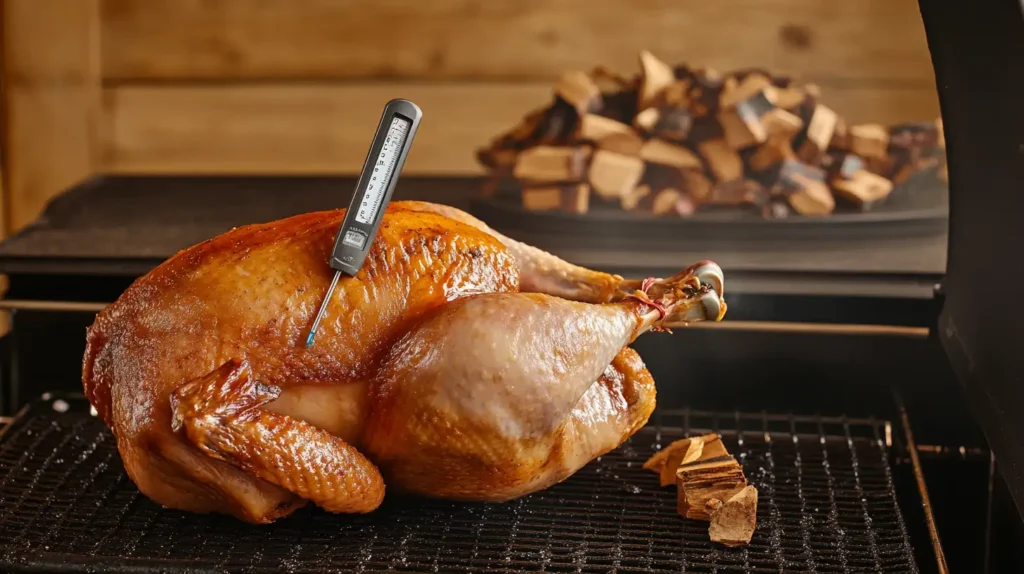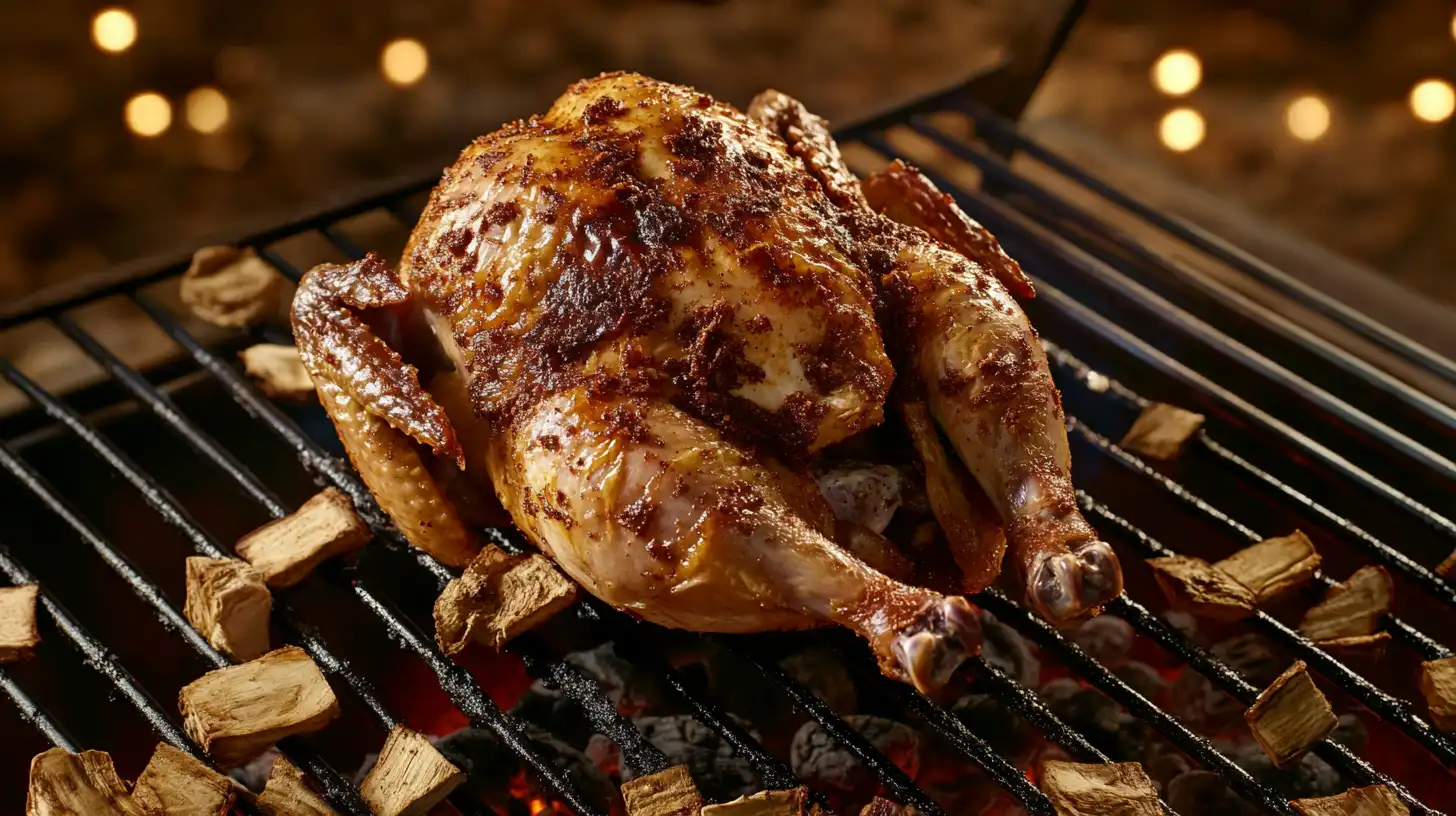Introduction
Smoked chicken is a favorite for its juicy texture and smoky flavor, but what happens when it turns out rubbery instead of tender? Many people face this problem, and it can be frustrating after spending hours smoking your chicken to perfection.
So, why is your smoked chicken rubbery? The issue often comes down to cooking temperature, preparation techniques, or the quality of the chicken. In this guide, we’ll explore the common reasons for rubbery smoked chicken, offer practical solutions, and share tips to help you achieve perfectly tender and flavorful results every time.
Common Reasons for Rubbery Smoked Chicken
Low Cooking Temperatures
One of the most common reasons for rubbery smoked chicken is cooking at a temperature that’s too low. When the smoker is set below 225°F (107°C), the chicken’s skin can become tough and chewy instead of crispy. Low temperatures don’t render the fat beneath the skin effectively, leaving you with an unpleasant rubbery texture. While low-and-slow cooking works great for some meats, chicken requires a balance to ensure tender meat and crispy skin.
Inadequate Preparation
Proper preparation is essential for tender smoked chicken. If the skin isn’t prepared correctly—such as patting it dry before cooking or failing to trim excess fat—it can prevent the chicken from achieving the right texture. Additionally, skipping important steps like brining or marinating can result in dry, rubbery meat instead of the juicy, flavorful chicken you expect.
Overexposure to Smoke
While smoke adds incredible flavor, too much of it can negatively impact the chicken’s texture. Over-smoking can dry out the meat, leading to a tough, rubbery texture. Thick, white smoke or adding wood chips too frequently can also create a bitter taste and compromise the quality of the chicken. Balanced smoke exposure is key to achieving the best results.
Poor-Quality Chicken Cuts
The quality of the chicken you use plays a big role in the final texture. Lower-quality chicken cuts, such as those injected with brine or solutions to increase weight, can result in uneven cooking. These additives can cause the meat to retain too much moisture, making the skin rubbery. Opting for fresh, high-quality chicken ensures better smoking results every time.

Solutions to Fix Rubberiness
Using a Brine or Marinade
One of the best ways to ensure tender, juicy chicken is by brining or marinating it before smoking. A brine, made from water, salt, and optional seasonings, helps the meat retain moisture during the smoking process. This step not only improves texture but also adds flavor throughout the chicken. If you prefer marinades, focus on using acidic ingredients like citrus juice or vinegar to tenderize the meat while infusing it with additional flavors. Brine or marinate your chicken for at least 2–4 hours for the best results.
Cooking at the Right Temperature
Setting your smoker to the correct temperature is crucial for perfect smoked chicken. Aim for a smoker temperature of 225°F–250°F (107°C–121°C) for the cooking process, but increase the heat to 325°F (163°C) toward the end to crisp up the skin. This two-stage cooking method allows the meat to cook evenly while giving the skin a golden, crispy finish. Using a consistent heat source and avoiding temperature fluctuations will improve your chicken’s overall texture.
Proper Smoking Techniques
To prevent overexposure to smoke, use wood chips sparingly and ensure they’re producing thin, blue smoke rather than thick, white smoke. Over-smoking can lead to a rubbery texture and an unpleasant taste. Additionally, avoid lifting the smoker lid too often, as this can disrupt the temperature and increase the cooking time. Maintaining proper airflow within the smoker ensures that the chicken cooks evenly without becoming tough or dry.
Choosing Quality Chicken
High-quality chicken makes a significant difference in the final result. Look for fresh, natural chicken without added solutions or preservatives. Organic or free-range chicken often has better texture and flavor. Also, consider choosing cuts with the skin on, as the skin helps lock in moisture during the smoking process. When you start with quality chicken, you’re already one step closer to a perfect smoked meal.

Tips for Preventing Rubberiness
Pat Dry for Crispy Skin
One of the simplest yet most effective ways to prevent rubbery chicken skin is to pat the chicken dry before smoking. Moisture on the surface of the chicken creates steam during the cooking process, which softens the skin and makes it rubbery. To avoid this, use paper towels to thoroughly dry the skin, especially if you’ve brined or rinsed the chicken beforehand.
For even better results, let the chicken air-dry in the refrigerator for 1–2 hours before placing it in the smoker. This technique, often referred to as “drying the skin,” helps it tighten and ensures a crispier finish. If you’re short on time, even 20–30 minutes of air-drying can make a noticeable difference. When you start with a dry surface, the skin is better able to crisp up under the heat of the smoker, resulting in a more enjoyable texture.
Use a Meat Thermometer
Cooking smoked chicken to the perfect internal temperature is key to avoiding both rubbery skin and dry meat. Using a meat thermometer ensures that you don’t undercook or overcook the chicken. Insert the thermometer into the thickest part of the meat, such as the breast or thigh, without touching the bone. For safe and tender chicken, the internal temperature should reach 165°F (74°C).
For whole smoked chicken, check multiple areas, including the breast and thigh, to confirm that all parts have reached the correct temperature. If the chicken is slightly undercooked, give it a few more minutes in the smoker and recheck the temperature. Investing in a digital meat thermometer with instant-read capabilities can make the process easier and more accurate. With this tool, you’ll never have to worry about rubbery or overcooked chicken again. Pair this tip with recipes like Crab Brulee Recipe for a gourmet smoked dinner
Rest the Chicken Before Serving
Resting the chicken after it’s finished smoking is a crucial step that many people overlook. When the chicken is hot from the smoker, the juices are still moving within the meat. Cutting into the chicken immediately can cause these juices to escape, leaving the meat dry and less flavorful. Allowing the chicken to rest ensures that the juices redistribute evenly, resulting in tender, juicy meat with better texture.
To rest the chicken, place it on a cutting board or platter and loosely cover it with foil. Let it sit for about 5–10 minutes before carving. This short resting period makes a big difference in the overall eating experience. Plus, it gives you a moment to prepare your sides or sauces for serving. For more precise smoking tips, explore the techniques in Smoker Recipes.
Season Generously for Better Flavor
While seasoning may not directly change the texture of the chicken, it plays a significant role in enhancing the overall dish. A well-seasoned chicken skin adds a flavorful crunch that complements the smoky interior. Start by rubbing the chicken with a generous blend of spices. A basic rub can include salt, pepper, garlic powder, onion powder, paprika, and your favorite herbs. For an extra kick, add a touch of cayenne or smoked chili powder.
If you’re looking to create a more complex flavor profile, consider using a dry brine. A dry brine involves coating the chicken with a mixture of salt and seasonings, then letting it sit in the refrigerator for several hours. This method not only seasons the chicken but also helps draw out excess moisture from the skin, promoting crispiness. When the skin is packed with flavor, even minor texture issues become less noticeable, leaving your guests impressed with every bite.
Brine Before Smoking
Brining your chicken with a mixture of salt, sugar, and water before smoking can enhance its texture and flavor. This technique also works wonders for other smoked meats, as seen in Is Brisket Healthy for You?.

Frequently Asked Questions
Why Does Skin Sometimes Stay Rubbery on Smoked Chicken?
Rubbery skin on smoked chicken often happens because the cooking temperature is too low, which prevents the fat under the skin from rendering properly. Low temperatures can create steam that softens the skin rather than crisping it up. To avoid this, cook the chicken at a higher temperature, especially during the last 20–30 minutes. Aim for at least 325°F (163°C) to achieve a crisp and golden finish.
Can You Salvage Already Rubbery Chicken?
Yes, you can often save rubbery chicken skin with a quick fix. Place the chicken on a grill or under a broiler for a few minutes to help crisp up the skin. Keep a close eye on it to avoid burning, and rotate the chicken to ensure even crisping. While it might not be perfect, this method can improve the texture and make the chicken more enjoyable.
What’s the Best Temperature for Smoking Chicken?
The best temperature for smoking chicken is between 225°F and 250°F (107°C to 121°C). This range ensures the meat cooks evenly and absorbs the smoky flavor. However, for crispy skin, increase the heat to 325°F (163°C) during the last part of the cooking process. This two-stage method provides juicy, flavorful meat with a satisfying crunch on the outside.
How Long Should Smoked Chicken Rest Before Serving?
Let smoked chicken rest for 5–10 minutes after cooking. Resting allows the juices to redistribute, making the meat more tender and flavorful. Simply cover the chicken loosely with foil and let it sit on a cutting board or platter before slicing. This small step makes a big difference in the overall texture and taste.
What’s the Best Wood to Use When Smoking Chicken?
Milder woods like apple, cherry, or pecan work best when smoking chicken. These woods add a subtle, sweet flavor that enhances the chicken without overpowering it. If you prefer a bolder taste, hickory is a great option, but use it sparingly to avoid masking the chicken’s natural flavors. Mixing woods, like combining cherry with oak, can also create a balanced, unique flavor profile.
Conclusion
Rubbery smoked chicken can be frustrating, but with the right techniques, it’s an easy problem to solve. Understanding the causes, such as low cooking temperatures, improper preparation, or overexposure to smoke, helps you take the steps needed to achieve perfectly tender and flavorful chicken every time.
By implementing solutions like patting the chicken dry, using a meat thermometer, and brining or marinating beforehand, you can improve the texture and flavor of your smoked chicken. Additionally, focusing on proper smoking techniques, such as maintaining consistent temperatures and using the right type of wood, ensures you get the best results.
Remember, practice makes perfect. Each smoking session is an opportunity to refine your skills and discover what works best for your preferences. With these tips, you’ll be well on your way to serving juicy, tender, and delicious smoked chicken that everyone will love. Happy smoking!


2 thoughts on “Why is my smoked chicken rubbery?”
Comments are closed.